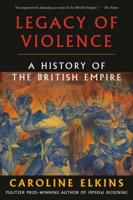Publisher's Synopsis
Although the polis, or city-state, defined the essence of Classical Greek civilization, evidence of its most basic characteristics is woefully inadequate. Now, in a work of cutting-edge research, Mogens Herman Hansen develops a novel method for estimating the overall size and local distribution of the Greek population throughout the ancient world - in both the Greek homeland and its colonies - and explains his reconstruction step by step. Reflecting the innovative work of the Copenhagen Polis Centre in its 2004 inventory of Archaic and Classical Greek city-states, Hansen's book makes it possible for the first time to assess the total population of the ancient Greek world. For 232 out of circa 1,000 city-states, the size of the urban center can be estimated, and for 636 city-states, we have an idea about the size of the territory. Employing a ""shotgun method"", Hansen derives approximate population figures and argues that, in the age of Alexander the Great, the population of all the Greek city-states must have totaled some 8-10 million people. His new estimates take into account not only males of military age but also elder sons and wives residing with parents, widows or divorced women who returned to a family home, unmarried daughters, elderly parents, and slaves. In addressing often-conflicting views on estimating populations, their distribution in various regions, and their settlement patterns within individual states, Hansen particularly challenges the long-standing opinion that the majority of ancient Greeks lived a rural life outside of poleis, and he calls for a reconsideration of long-held assumptions about the prevalence of a subsistence economy with little long-distance trade.










